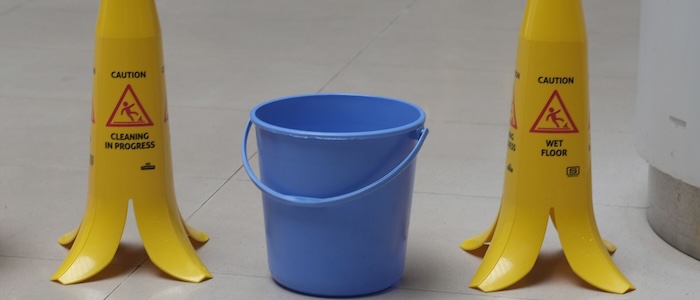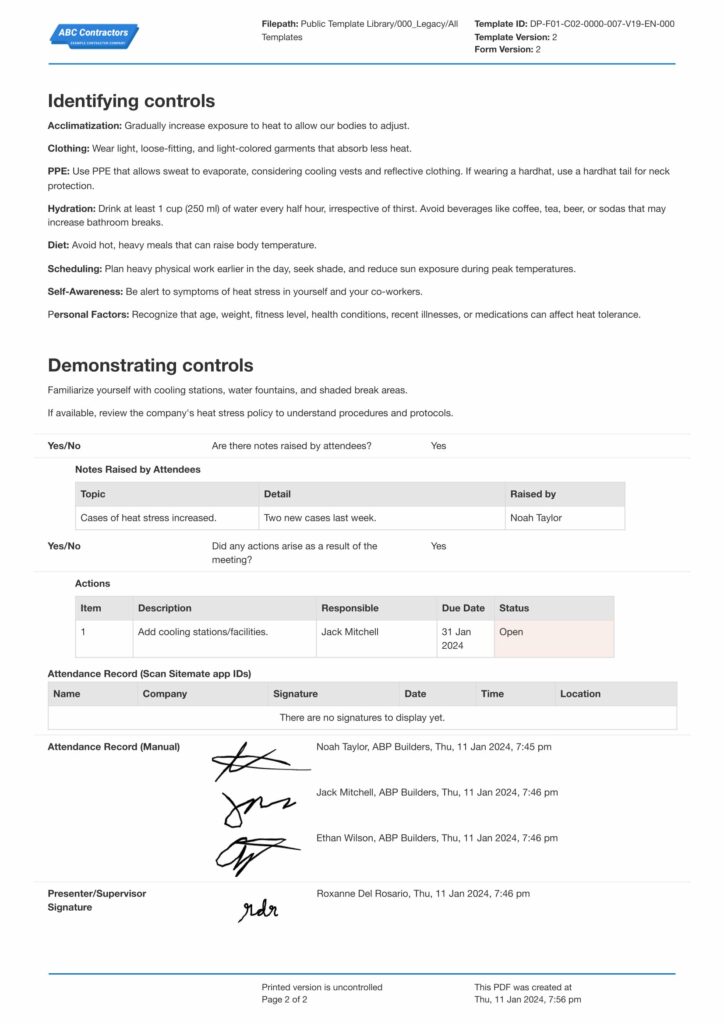Dashpivot Article – Heat Stress Symptoms

Heat Stress Symptoms
Heat stress, a condition caused by excessive heat exposure, is a serious health risk, especially in occupational settings or during extreme weather conditions.
It's crucial to understand the symptoms of heat stress to prevent more severe heat-related illnesses.
This article explores the common heat stress symptoms and the appropriate responses.
Understanding Heat Stress
Heat stress occurs when the body's means of controlling its internal temperature starts to fail.
As the body overheats, it can lead to various heat-related illnesses, ranging from mild symptoms to life-threatening conditions.
Common Symptoms of Heat Stress
Heat Cramps
Painful muscle spasms, often in the legs or abdomen, are a common early symptom. They are typically a result of dehydration and loss of electrolytes.
Heat Rash
Also known as prickly heat, it appears as red, pimple-like lesions caused by excessive sweating in hot and humid environments.
Heat Exhaustion
Symptoms include heavy sweating, weakness, dizziness, nausea, headache, and fainting. This condition results from the loss of body fluids and salts due to excessive sweating.
Heat Stroke
The most severe form of heat illness, characterised by a body temperature of 104°F (40°C) or higher, altered mental state, nausea, and sometimes unconsciousness. Heat stroke is a medical emergency and requires immediate medical attention.
Industry-Specific Symptoms of Heat Stress
Construction Industry
- Dehydration and Heat Exhaustion: Due to long hours under direct sunlight, construction workers may experience severe dehydration, leading to symptoms like dizziness, weakness, and confusion.
- Heat Cramps: Prolonged physical labor can cause muscle cramps, especially in the arms, legs, and back.
- Sunburn and Heat Rash: Direct exposure to the sun can result in sunburns and heat rashes, impairing the body's ability to regulate temperature.
Agriculture Industry
- Heat Exhaustion: Farmers often work without shade, leading to excessive sweating, fatigue, and faintness.
- Heat Stroke: Symptoms like disorientation and nausea may develop quickly due to the intense physical labor in hot conditions.
- Dehydration: Limited access to water in remote fields can lead to severe dehydration.
Manufacturing Industry
- Heat Fatigue: In factories, especially near furnaces or boilers, workers might experience extreme fatigue, a key symptom of heat stress.
- Concentration Difficulties: The hot environment can impair cognitive functions, leading to decreased attention and increased risk of accidents.
- Heat Rashes: Prolonged exposure to heat and humidity can cause skin irritation and rashes, particularly in areas restricted by safety equipment.
Mining Industry
- Heat Exhaustion and Stroke: The deep underground environment, combined with heavy equipment, can quickly lead to heat exhaustion and even heat stroke.
- Dehydration: Due to high temperatures and physical labor, miners are at a high risk of dehydration.
- Respiratory Difficulties: The combination of heat and poor ventilation can exacerbate respiratory issues.
Transportation and Logistics
- Heat Fatigue: Truck drivers and warehouse workers are prone to heat fatigue, especially in non-air-conditioned spaces.
- Dehydration: Long hours without adequate water intake can lead to dehydration.
- Dizziness and Fainting: In enclosed, hot spaces, drivers and logistics workers may experience dizziness and fainting spells, posing significant safety risks.
Preventive Measures
Hydration
Drinking plenty of fluids is crucial in preventing dehydration and managing heat stress.
Appropriate Clothing
Lightweight, loose-fitting, and light-coloured clothing helps keep the body cool.
Environmental Controls
Using fans, air conditioning, and shade can reduce exposure to high temperatures.
Acclimatisation
Gradually increasing exposure to hot conditions allows the body to better adapt.
Regular Breaks
Taking breaks in cool areas and limiting time in hot environments can prevent overheating.
First-Aid Measures
For Heat Cramps
Move the individual to a cool place and provide water or sports drinks.
For Heat Rash
Keep the rash area dry and cool; calamine lotion may also provide relief.
For Heat Exhaustion
Rest in a cool, shaded area and drink plenty of fluids. Applying cool, wet cloths to the skin can also help.
For Heat Stroke
This is a medical emergency. Call for immediate medical assistance. While waiting for help, move the person to a cooler place and try to cool them down with wet cloths or a cool bath.
In occupational environments, some of the best preventative techniques can be regular safety meetings, training and toolbox talks on heat stress.
These serve as ways to educate and remind your team on heat stress symptoms and how to prevent them before an incident occurs.
See how you could use a heat stress toolbox talk below to talk about heat stress symptoms and how to prevent them.

Use this heat stress toolbox talk template to educate your team on heat stress symptoms
How you can use regular toolbox talks to help your team understand heat stress symptoms
You can run all the safety training you like, but if your team isn't following heat stress processes on site, there will still be incidents.
Running regular heat stress toolbox talks before work in hot seasons or particularly hot days can help reinforce safety training on heat stress symptoms and how to prevent incidents.
This digital toolbox talk heat stress template makes it quick and easy to run efficient toolbox talks to help avoid heat stress-related incidents on site.
It comes standardised with fields to prepare your heat stress talking points, such as symptoms and preventative actions, feedback from your team and signatures/attendance.

Toolbox Talks Slips Trips and Falls template
Manage your teams safety with regards to slips, trips and falls with this Toolbox Talk template.

Site Security Toolbox Talk template
Keep your team up to date with site security with this Toolbox Talk Site Security.

Toolbox Talk Noise Pollution template
Keep your team aware of noise pollution, ways to manage risks and reduce noise with this Toolbox Talk template.

